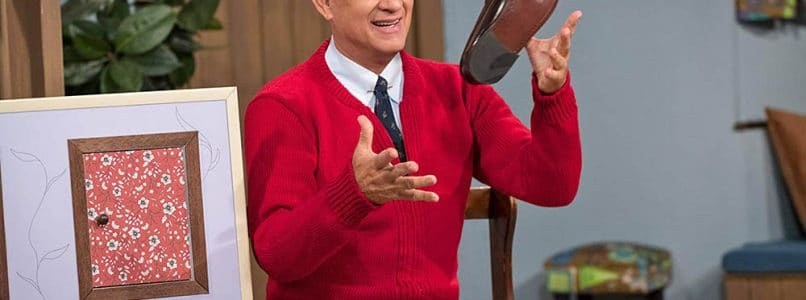DALLAS Two years ago, Orville Rogers’ 31 family members gathered at White Rock Lake in Dallas, near the patriarch’s home, to run a combined 100 miles in honor of his hundredth birthday.
Clad in blue t-shirts bearing his likeness and the slogan: “Celebrating 100 Years of the Running Man,” a reference to his autobiographical book The Running Man: Flying High for the Glory of God, the group epitomized what mattered most to Rogers: faith, family, fitness, service.
Rogers died in Dallas in hospice care on Nov. 14, 2019, two weeks shy of his 102nd birthday, ending an earthly race which saw him set multiple world and national age group records in USA Track and Field events, competitions he first entered at 90.
The retired pilot, who held more than 18 records for his age group, had recently undergone heart valve replacement surgery and hoped he would be able to compete in a future 800-meter competition, WFAA reported.
Rogers became a nationally-acclaimed runner, using that platform to humbly honor God.
His 2017 victory in the 60-meter sprint in the USATF Masters Indoor Championships saw the then 99-year-old Rogers edge out his 92-year-old opponent, Dixon Hemphill, by 0.05 seconds. A video of the race went viral, propelling Rogers into the national spotlight, leading to numerous interviews on local and national news and sports outlets.
Rogers continued to set records as a centenarian, including new world marks in the 60-meter, 200-meter, 400-meter, 800-meter and 1,500-meter events for ages 100-104 at the USATF Indoor Masters Championships in Landover, MD, in March 2018. He broke the American mark in the 400-meter in the USATF Outdoor Masters Championships in Spokane later that July.
“People ask me all the time, how did you get to be 100? Number 1, I’m a believer in our Lord, Jesus Christ. Number 2, I had a loving wife,” he told the Spokane Spokesman-Reviewa day before the 2018 record-breaking race.
When asked for the secret to his longevity, Rogers characteristically credited his faith, his supportive family and his commitment to exercise and eating right, inspired by his mentor, Kenneth Cooper, founder of Dallas’ Cooper Clinic.
In an interview video-recorded two years ago at First Baptist Church of Dallas, where Rogers was a long-time member, he recalled that at age 50, he read Cooper’s book Aerobicsand started running.
“The record books are wide open for 100 and up,” he mused. “All I have to do is show up, suit up, start and finish,” advice he likened to running the race of the Christian life, quoting Hebrews 11:1-2, and discussing his salvation at age 10 and the renewal of his faith as a college student.
“So it’s not difficult to remain disciplined if you have a deep … conviction in your heart that you are a child of God and you are saved by the efficacious death of our Lord Jesus on the cross,” Rogers said.
In an interview with WFAA last year, Rogers said, “I did not seek fame, I did not seek long life, I did not seek riches. But God has blessed me with all three and I’m trying to live up to it.”
Rogers’ track career provides a highlight reel of the second half of his life.
Born in Hubbard, Texas, Rogers grew up in Oklahoma and earned a degree in mechanical engineering in 1940 from the University of Oklahoma, where he met his future wife, Esther Beth Shannon. The two were married for 64 years, until her death in 2008 at age 88.
Rogers served four and half years in the U.S. Army Air Corps, training bomber pilots in World War II. During the Cold War, he was recalled to the United States Air Force and served for 21 months, flying the B-36 bomber on secret missions during the Korean Conflict.
Following a 31-year career as a commercial pilot with Braniff Airlines, Rogers flew missionary airplanes for Jungle Aviation and Radio Service in Africa, South America and Southeast Asia. He and his wife spent 13 months in Tanzania with Southern Baptist missions from 1981-82, as Rogers flew missionary airplanes while Esther Beth assisted from the ground.
“While I was in Africa, I flew in missionaries, missionary kids, supplies, mail, whatever was needed. Whatever they wanted me to do,” he said in a 2014 interview with the organization Operation Care.
Many Christian and civic organizations have benefitted from the generosity and involvement of Orville and Esther Beth Rogers, including Southwestern Baptist Theological Seminary, Criswell College, First Baptist Dallas and First Baptist Academy.
Rogers was preceded in death by his wife and a son, Orville Curtis Rogers, Jr. He is survived by sons Bill and Rick, daughter Susan, numerous grandchildren and great-grandchildren.
As social media filled with accolades for and memories of Rogers following his passing, the simple message from his daughter, Susan Rogers Eveland, stated that her father had “successfully completed his final earthly ‘race’… We are indeed thankful for him—how he loved us & Mom and lived to honor God in every area of his life.”
A memorial service for Rogers will be held on Monday, Nov. 25 at 11:00 a.m. in the historic sanctuary of First Baptist Church, 1707 San Jacinto Street, Dallas, 75201.
This article contains information from a variety of sources, including the reporter’s 2014 interview with Rogers for Operation Care.











